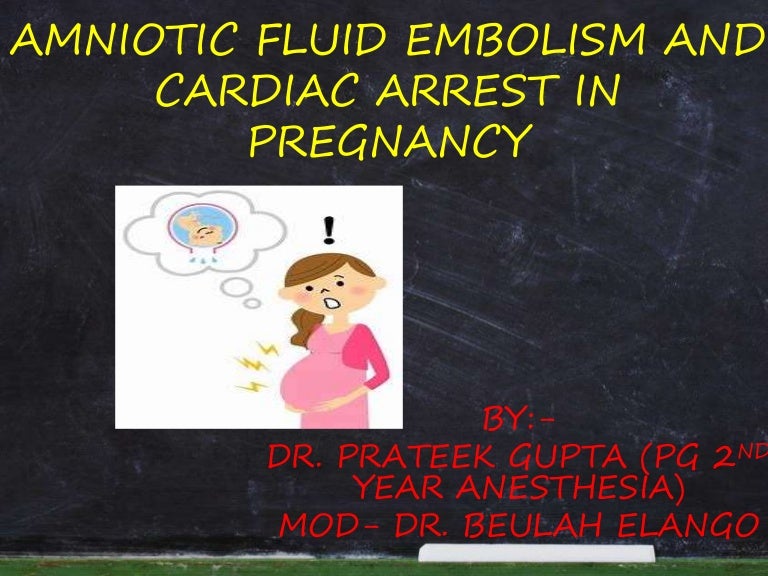

“Most patients who suffer from AFE don’t make it through the first hour. “The maternal mortality rate of amniotic fluid embolism is approximately 80 to 90 percent,” Dr. The rest of the day was spent treating Meghan and her baby and hoping they would survive. The healthcare team immediately wheeled Meghan to the operating room – at the time, not knowing what caused her heart to stop – delivered the baby within seconds and performed CPR, pushed medicines and resuscitated her. Weaver recalls that Meghan was progressing beautifully during labor when she suddenly sat up, said she couldn’t breathe and then she was gone. That’s exactly what happened to Meghan Jolliffe.ĭr. “A patient may report things like, ‘I don’t feel well’ or ‘something is wrong with me’ or ‘I can’t breathe,’ but it’s literally moments before their heart stops.” “There are occasionally some warning signs immediately prior, indicating, something we refer to in medicine as, a sense of impending doom,” she added. “One minute the patient is fine and the next, their heart is no longer beating.” Weaver, an OB-GYN at Overland Park Regional Medical Center in Overland Park, Kansas. “Amniotic fluid embolism is when some of the amniotic fluid from inside of the uterus gets into the maternal bloodstream and lung circulation and can cause cardiovascular collapse,” said Dr. 2014 Feb 21 111(8):126-32.A sense of impending doom is how Kristi Weaver, DO, describes what could be a potential warning sign of amniotic fluid embolism (AFE) – a rare but life-threatening condition that most commonly occurs during labor and delivery. Amniotic fluid embolism: an interdisciplinary challenge: epidemiology, diagnosis and treatment. Case 33-2019: A 35-Year-Old Woman with Cardiopulmonary Arrest during Cesarean Section. Kramer MS, Rouleau J, Baskett TF, Joseph KS, Maternal Health Study Group of the Canadian Perinatal Surveillance System Amniotic-fluid embolism and medical induction of labour: a retrospective, population-based cohort study. Amniotic fluid embolism: analysis of the national registry. 2015 May 28(7):793-8.Ĭlark SL, Hankins GD, Dudley DA, Dildy GA, Porter TF. Amniotic fluid embolism: antepartum, intrapartum and demographic factors.

Other causes of hemodynamic instability should be ruled out.Ĭopyright © 2023, StatPearls Publishing LLC.įong A, Chau CT, Pan D, Ogunyemi DA. The diagnosis is of exclusion based on clinical presentation. The diagnosis of AFE has been established at autopsy when fetal squamous cells are found in the maternal pulmonary artery blood however, fetal squamous cells are also sometimes present in the circulation of laboring women who do not develop AFE. Data from the National Amniotic Fluid Embolism Registry suggests that the process resembles anaphylaxis more than embolism, and the terminology of "anaphylactoid syndrome of pregnancy" has been recommended because fetal tissue or amniotic fluid components are not always found in women who present with signs and symptoms attributable to amniotic fluid embolism. Steiner and Luschbaugh first described amniotic fluid embolism in 1941, after they found fetal cells in the maternal pulmonary circulation, who died during labor. In the United States, AFE occurs in 2 to 8 per 100,000 deliveries and is the cause of maternal mortality between 7.5% to 10%. Survivors are frequently left with serious cardiac, renal, neurologic, and pulmonary dysfunction. The presentation is abrupt, usually with sudden cardiorespiratory collapse followed by severe coagulopathy and refractory resuscitation. Amniotic fluid embolism (AFE) represents the second leading cause of peripartum maternal death in the United States and the number one cause of peripartum cardiac arrest. Amniotic fluid embolism (AFE) is a life-threatening obstetric emergency characterized by sudden cardiorespiratory collapse and disseminated intravascular coagulation.


 0 kommentar(er)
0 kommentar(er)
